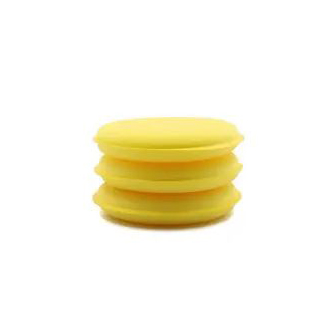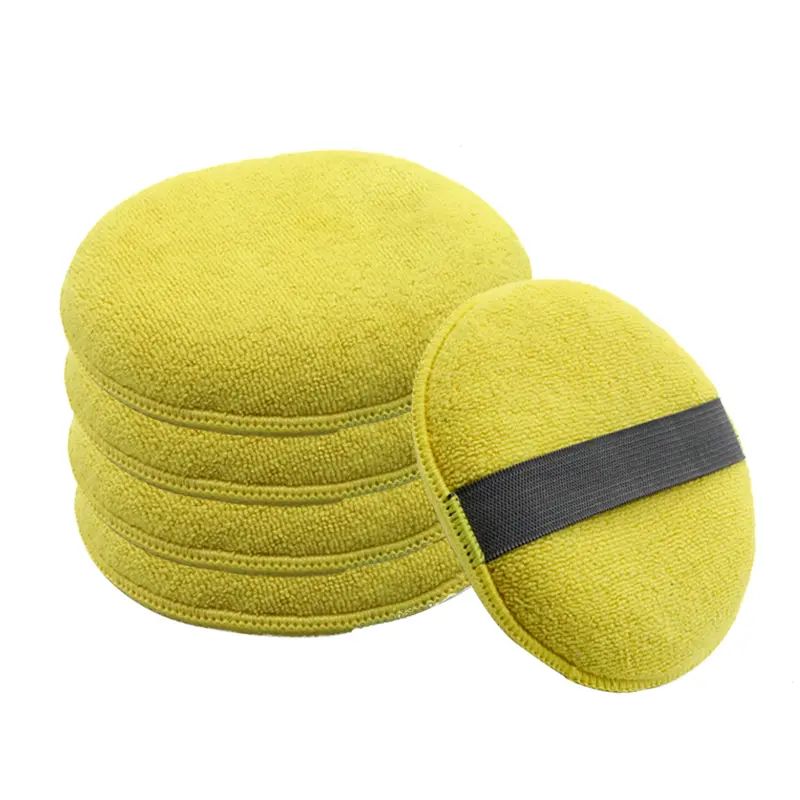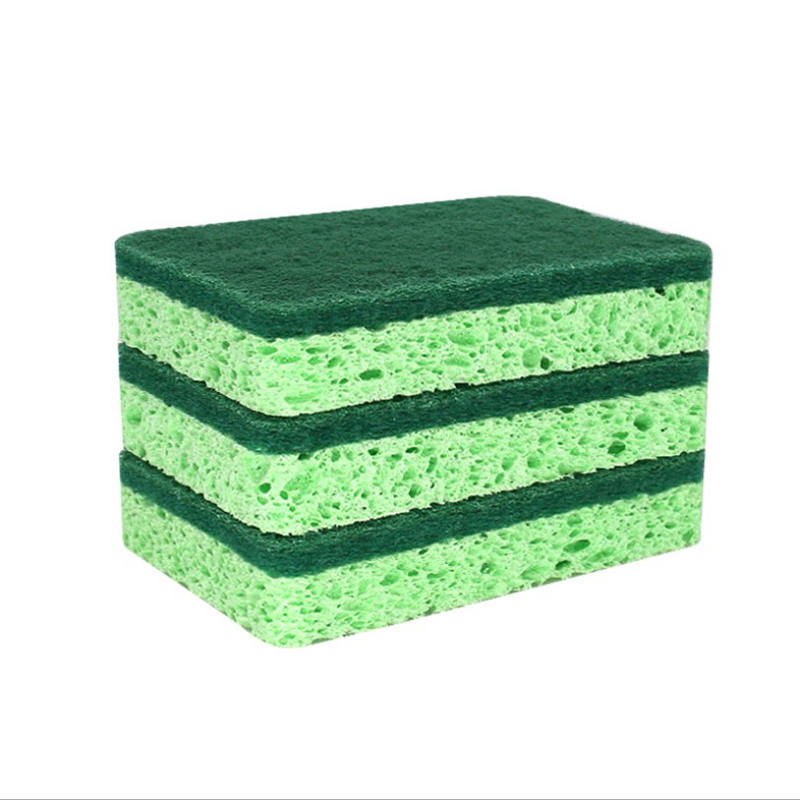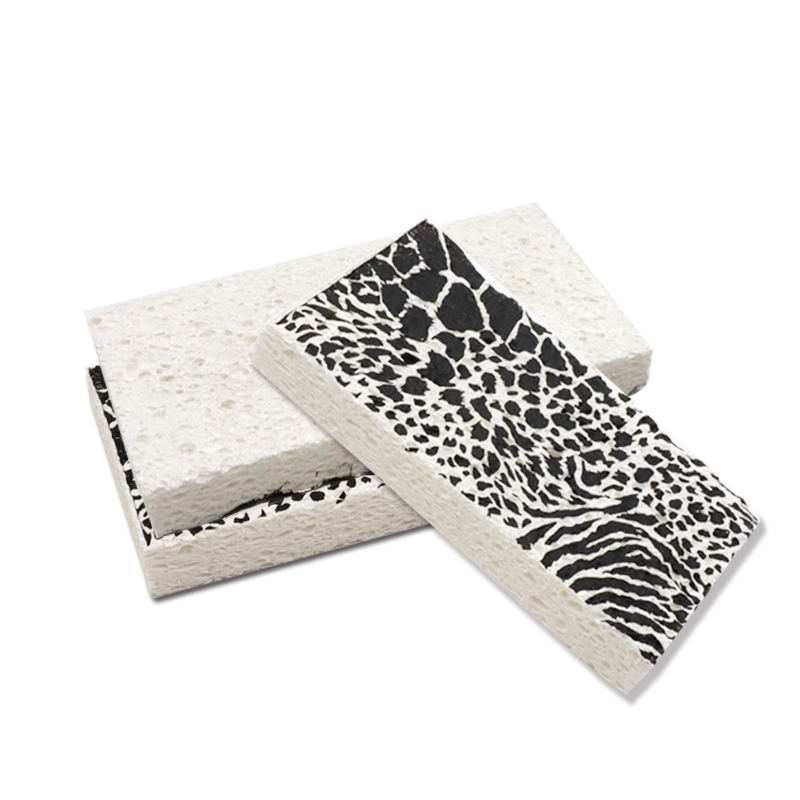How Do Wood Pulp Cellulose Sponges Contribute to Reducing Plastic Waste?
1. Biodegradability
One of the most compelling reasons to switch to wood pulp cellulose sponges is their biodegradability. Unlike synthetic sponges that often contain materials like polyurethane or polyester, which can take hundreds of years to break down, cellulose sponges decompose quickly and naturally. The fibers in wood pulp are derived from renewable plants and can be absorbed back into the soil without leaving harmful residues.
When you dispose of a cellulose sponge, whether through composting or landfill, it will begin to break down within weeks or months, depending on the environment. This is in stark contrast to plastic sponges, which contribute to long-term waste issues. Microplastics from synthetic sponges can end up in waterways and oceans, harming marine life and ecosystems. In fact, many studies have shown that plastic microfibers are ingested by fish, eventually working their way up the food chain.
Cellulose sponges offer a solution to this growing problem by being completely biodegradable. Their breakdown process leaves no lasting impact on the environment, unlike their plastic counterparts. As consumer awareness about sustainability increases, many are now opting for biodegradable options that help preserve natural resources and reduce pollution. These sponges are a simple but powerful way to reduce the ecological footprint of everyday products.
2. Renewable Material
The materials used to produce wood pulp cellulose sponges are a significant factor in their environmental benefits. Wood pulp, derived from sustainably harvested trees, is a renewable resource. Unlike synthetic sponges, which are often made from petroleum-based products, cellulose sponges are made from natural plant fibers. These fibers are renewable and abundant, meaning their production doesn’t deplete finite resources.
Wood pulp is a byproduct of the paper industry, which means it often comes from timber mills that are already processing wood for paper products. This adds to the efficiency of cellulose sponge production, as it uses materials that would otherwise go to waste. Furthermore, responsible sourcing of wood pulp, such as certification through organizations like the Forest Stewardship Council (FSC), ensures that the wood comes from sustainably managed forests, contributing to sustainable practices in both the forest and the manufacturing process.
In contrast, petroleum-based products used to make traditional sponges contribute to the depletion of fossil fuels and environmental degradation from drilling and transportation. The shift to renewable materials like cellulose represents a key part of transitioning to a more sustainable economy.
3. Reduced Plastic Consumption
Switching to wood pulp cellulose sponges is a direct and effective way to reduce plastic consumption. Plastic sponges are commonly made with synthetic polymers, which are derived from petroleum. These sponges are non-renewable, non-biodegradable, and contribute to long-term pollution in both landfills and oceans. By choosing cellulose sponges, consumers make a conscious decision to reduce their use of petroleum-based plastics.
In the U.S. alone, millions of plastic sponges are discarded each year, many of which end up in the ocean, contributing to the growing plastic waste crisis. By using cellulose sponges, which are made from natural wood fibers, individuals can help curb the demand for plastic products in daily life.
Additionally, many cellulose sponges come in packaging made from recyclable or compostable materials, further reducing the overall environmental impact of the product. This makes cellulose sponges a great option for people looking to eliminate plastic from their homes and daily routines.
4. Lower Carbon Footprint
When it comes to sustainability, the carbon footprint of a product is an essential consideration. The production of synthetic sponges made from petroleum-based materials often requires the extraction and refinement of fossil fuels, which is energy-intensive and releases harmful greenhouse gases into the atmosphere. On the other hand, the production of wood pulp cellulose sponges generally requires far less energy.
The process of turning wood pulp into cellulose sponges involves fewer toxic chemicals and typically results in a lower overall carbon footprint. In fact, the entire lifecycle of cellulose sponges, from raw material sourcing to production and disposal, has a smaller environmental impact than synthetic sponges.
Moreover, cellulose sponges are not only lower carbon in terms of production but also in disposal. Since they are biodegradable, their end-of-life stage doesn’t require landfilling or incineration, both of which contribute to carbon emissions. Instead, cellulose sponges break down naturally, returning to the soil and contributing to healthy ecosystems.
5. Reusability and Durability
One of the main advantages of wood pulp cellulose sponges is their durability. While many synthetic sponges start to degrade or lose effectiveness after just a few uses, cellulose sponges are designed to last longer, even with frequent use. Their superior durability means fewer replacements, which ultimately results in less waste over time.
Cellulose sponges are known for their ability to hold more liquid than synthetic sponges, making them more efficient for cleaning tasks. The natural fibers are also resistant to tearing and shredding, which can happen with synthetic sponges when exposed to harsh cleaning environments. As a result, a cellulose sponge can last weeks or even months, depending on its usage.
This reusability is a key feature that helps reduce plastic waste. Since users don’t need to replace their sponges as often, the overall demand for disposable plastic sponges decreases. Over time, choosing reusable cellulose sponges can result in significant reductions in household waste.
6. Composting Option
Cellulose sponges are a great addition to a composting routine. When they’ve reached the end of their useful life, cellulose sponges can be added to a home compost bin or disposed of in an industrial composting facility. Unlike plastic sponges, which cannot break down in composting systems, cellulose sponges decompose quickly, enriching the soil with organic matter.
The composting of cellulose sponges offers several environmental benefits. Not only does it reduce waste sent to landfills, but it also ensures that the material returns to the earth in a form that benefits the environment. By composting cellulose sponges, users can reduce their carbon footprint and promote a healthier ecosystem.
For consumers seeking zero-waste or environmentally conscious options, composting cellulose sponges is an excellent choice. It aligns with sustainable practices like reducing landfill waste and promoting the healthy cycling of organic materials in nature.
7. Supporting Circular Economy
Choosing wood pulp cellulose sponges helps support a circular economy, where resources are continually reused, recycled, and returned to the ecosystem rather than being discarded after a single use. This economic model contrasts with the traditional “take, make, dispose” approach that relies on plastic products.
In the circular economy, products are designed for longevity, reusability, and recyclability. Wood pulp cellulose sponges, being biodegradable and compostable, fit perfectly into this model. Their production uses renewable materials, and at the end of their lifecycle, they can be returned to nature without contributing to pollution.
Cellulose sponges embody the values of sustainability by promoting resource efficiency and reducing waste. By adopting products that align with a circular economy, consumers can play a role in shifting away from disposable consumer culture.
Comparison of Wood Pulp Cellulose Sponges vs. Synthetic Sponges
| Feature | Wood Pulp Cellulose Sponges | Synthetic Sponges |
|---|---|---|
| Material | Made from renewable wood pulp | Made from petroleum-based plastics |
| Biodegradability | Fully biodegradable and compostable | Non-biodegradable, contributes to plastic waste |
| Renewability | Made from renewable plant fibers | Made from non-renewable petroleum resources |
| Carbon Footprint | Lower energy consumption in production | Higher energy consumption and emissions |
| Durability | Long-lasting, resists tearing and wear | Often degrades quickly, requires frequent replacement |
| Composting | Can be composted at end of life | Cannot be composted, contributes to landfill waste |
| Environmental Impact | Eco-friendly and sustainable | Contributes to plastic pollution |
News Category
- Company News(31)
- Industry News(116)

 简体中文
简体中文 English
English 日本語
日本語 русский
русский Español
Español عربى
عربى











